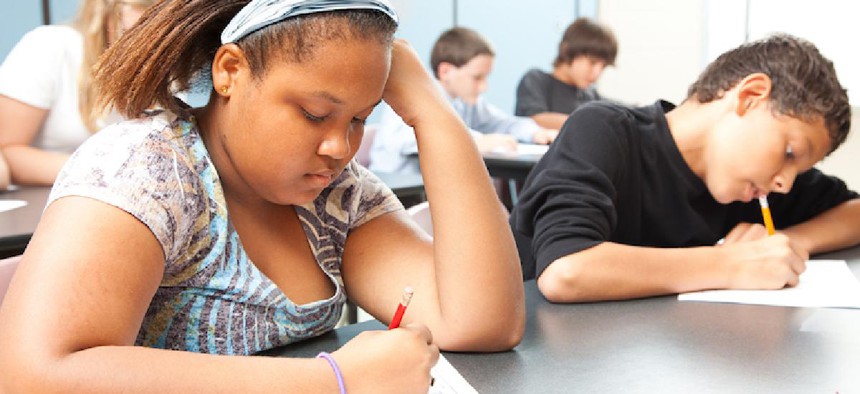It’s time to introduce a practical approach to improving diversity at Stuyvesant, Bronx Science, Brooklyn Tech and the other specialized high schools. State law allows for a “discovery program” as an alternative path for admissions to students who are “disadvantaged.” By redefining “disadvantaged” to not simply mean poor, but also educationally disadvantaged by an unequal school system, a rediscovered discovery program would improve diversity at these schools.
New York state just recently allocated $2 million to improve diversity at the specialized high schools. These funds are targeted for outreach, free test prep and pipeline programs aimed at underrepresented middle schools. Legislators committed to increasing diversity at the specialized schools recognize that there is unequal educational opportunity in New York City’s schools. The demographic makeup of the city’s specialized schools reflects that only 15 percent of middle schools account for 85 percent of the student body.
Targeting underrepresented middle schools can be successful. The legislators recognized Brooklyn Tech Alumni Foundation’s contribution to this effort by setting aside $250,000 to expand its pilot STEM pipeline program. With the support of National Grid, Tech’s STEM pipeline program identifies rising seventh graders in underrepresented Brooklyn middle schools. Its two-year program focuses on studying science, technology, engineering and math and gives them free test prep to do well on the test. We have had good success with this program. Each of the specialized schools should use the state’s funding to develop their own approach to promoting middle school outreach and diversity of admissions.
Doing away with the Specialized High School Admissions Test as the sole criterion for admission to eight of the city’s top performing schools (out of 400 high school programs citywide) and replacing the test with inherently subjective multiple criteria, as proposed by some, is not the answer. In fact, high-performing multiple criteria schools have far higher percentages of white students and far lower levels of students eligible for free- or reduced-cost lunches, meaning they are wealthier than students in the specialized schools.
A study by NYU’s independent Research Alliance for New York City Schools bore this out, warning that replacing the Specialized High School Admissions Test with multiple criteria would have little impact on changing demographics, and could in fact make the situation worse.
The answer is to provide the commitment and resources to provide enhanced academic programming to high-performing students in middle schools in underrepresented communities to prepare them to succeed both on the test and in the schools’ challenging curriculum.
New York state has done its part. It’s now time for the city to do its share by reinstituting a reconfigured Discovery Program that enables students from underrepresented communities to gain admission on a fully equal basis as every other successful applicant.
Discovery enables the Department of Education to offer an intensive summer program focused on math and language arts to students just missing the cut-off score. Students successfully demonstrating the required proficiency are admitted. Historical evidence shows that students admitted through Discovery programs did just as well as the students who met the cut-off score because the additional summer coursework was effective.
Today, Discovery is all but dead. Few of the specialized schools use it. Of the original big three, Brooklyn Tech is the only one.
Currently, eligibility for Discovery uses a definition of “disadvantaged” which focuses primarily, but not exclusively, on the poverty of the student’s family. The utility of using this definition to promote diversity is limited given that Asian students who comprise the largest cohort of students at the schools are just as likely to come from poor families as African-American and Hispanic students.
We need a new definition of “disadvantaged” which recognizes that, like income inequality, educational opportunity inequality is real in New York City and should be taken into account. And in this respect, the lack of gifted and talented programs in some predominantly poor and minority districts, and the lack of enriched math coursework in the higher grades, is skewed to the disadvantage of the underrepresented communities in the specialized schools.
Significant progress could be made in promoting diversity through several measures: mandating that every specialized school participate in Discovery; redefining the term “disadvantaged” to include students coming from middle schools that send few or no students to these schools; and having programs intended to promote Discovery at each of the specialized schools – and in particular at Stuyvesant, Bronx Science, Brooklyn Tech and Staten Island Tech – by focusing on the cut-off score used at each of these schools,
This is an opportune time to make this change. With state funds focused on creating a pipeline from underrepresented middle schools for enrichment and test prep, reinstituting a large Discovery program along these lines would complement these efforts. State law allows for Discovery for disadvantaged students, but does not define what that means. New York City can.
Larry Cary, a Manhattan lawyer, is president of the Brooklyn Tech Alumni Foundation
NEXT STORY: De Blasio failing to keep transparency promises


